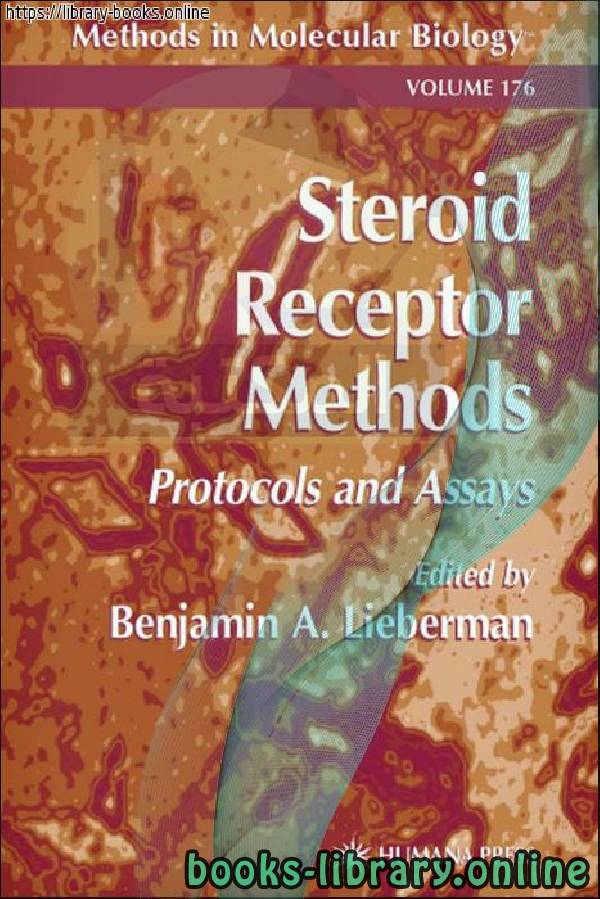❞Benjamin A. Lieberman❝ المؤلِّف - المكتبة
- ❞Benjamin A. Lieberman❝ المؤلِّف - المكتبة
█ حصرياً جميع الاقتباسات من أعمال المؤلِّف ❞ Benjamin A Lieberman ❝ أقوال فقرات هامة مراجعات 2025 ❰ له مجموعة الإنجازات والمؤلفات أبرزها Methods in Molecular Biology Mark Danielsen auth Protocols and Assays ❱
إنضم الآن وتصفح بدون إعلانات
له مجموعة من الإنجازات والمؤلفات أبرزها ❞ Methods in Molecular Biology Mark Danielsen auth Protocols and Assays ❝
#32K
4 مشاهدة هذا اليوم#30K
3 مشاهدة هذا الشهر#25K
2K إجمالي المشاهدات نبذه عن الكتاب: This volume of the Methods in Molecular Biology series is entirely devoted to the study of steroid receptor biology. Steroid hormone receptors represent a powerful system for the study of both the most fundamental molecular mechanisms of gene regulation and control and the gross physiological responses of organisms to steroid hormones. Research in this field has brought forth advances in the treatment of cancer, endocrine disorders, and reproductive biology, and allowed elucidation of the fundamental biological mechanisms of gene expression. In Steroid Receptor Methods: Protocols and Assays, the reader will find a collection of methods and protocols submitted by many fine steroid receptor researchers from throughout the world. These authors have been instructed to create a highly informative cross-section of the latest research techniques available. The resulting work is timely, useful, and approachable for both the experienced researcher and the novice to the field. Because the steroid receptor family is represented by a wonderfully diverse, yet strongly interrelated set of steroid receptor proteins, Steroid Receptor Methods contains protocols for the production and purification of a variety of receptor forms, including the progesterone, glucocorticoid, and androgen receptors. These procedures provide the raw material needed to conduct sophisticated biochemical analysis of receptor properties. Other techniques presented allow the reader to perform biochemical experiments on DNA binding characteristics, hormone binding assays, and protocols using combinatorial chemistry for drug discovery. Because steroid receptor effectiveness is influenced by a variety of cellular proteins, there are included in this volume a series of novel protocols utilizing the latest advances in immunochemistry, yeast two-hybrid screening, fluorescence, and other biochemical and cellular techniques to detect and detail these interactions. These techniques include both in vitro and in vivo approaches to provide the widest possible selection of tools to the modern biological researcher. Finally, in recognition of the growing importance of bioinformatics in biological research, several chapters have been included to guide and assist the modern research biologist in harnessing this increasingly valuable resource. These chapters locate and make accessible to the researcher the diverse computational tools currently available via the Internet. Taken together these chapters provide both novice and experienced researchers alike a set of invaluable tools to advance and extend their research.
عدد المشاهدات
3707
عدد الصفحات
377
نماذج من أعمال Benjamin A. Lieberman:


